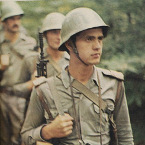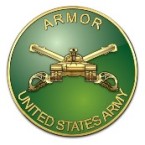CCIP-subsim
Posts: 695
Joined: 11/10/2015
Status: offline

|
Two things I wanted to bring up on related points:
1) As far as Vietnam: I totally agree about counter-insurgency - that's not really an AB thing, and even with the Chechnya mod it's a bit of a) creative license (i.e. using some pretty unrealistic mechanics to get reasonably realistic outcomes); and b) the fact that there was a semi-conventional phase to that conflict.
But while it's true that Vietnam was mostly an asymmetric, counter-insurgency war - not all of it was. There were conventional, armor-heavy phases to it. For example, in the area around An Loc (north of Saigon) there were at least 3 separate campaigns (1968, 1972, 1975) that involved a large number of North Vietnamese tanks as the main fighting force. I’ve actually toyed around with the idea of making a Vietnam Mod for AB focusing on this area, but figured I’ll hold on and see how things like rice paddy tiles and future air mobility features might develop. Other battles that involved a lot of fairly conventional armor vs. armor forces were Operation Lam Son 719 into Laos in 1971, and the Battle of Quang Tri in the spring of 1972 (where the North Vietnamese even brought in some close air support) - though these were mostly ought by the South Vietnamese army, with US mainly providing air support. And there was another campaign with a major commitment of North Vietnamese armor in 1971, which was asymmetric but in the opposite direction - Campaign Z, fought in the Plain of Jars and culminating in the Battle of Skyline Ridge in 1971, where the irregulars were US-backed Hmong guerrillas who had to face a substantial number of T-34s.
Anyway, point being - while AB is probably not well suited to the Vietnam war as a whole, there are some portions of the war where it may actually work very well indeed.
2) In terms of sources: I agree that it’s always best to have primary sources, but the situation is not always as bad as it seems. With China, North Korea, and particularly North Vietnam - for one thing, there is a lot that can be adapted directly from Soviet doctrine, especially in terms of armor. In all my research on Vietnam, I can pretty comfortably say for example that at least as far as the Vietnam war itself went - there’s no such thing as a North Vietnamese armor/combined arms doctrine separate from the Soviet one, because the North Vietnamese were fully supplied, trained and advised by the Soviets in this respect. So it is possible to transfer over a lot of the basic armaments and OOBs, with some tweaks to reflect the theater and quality - asking “What Would Ivan Do?” is often not the worst approach in that regard.
More importantly though, there are sources out there which are excellent even if the nation’s own military archives are closed (as is the case with North Vietnam, China, and Korea). The best of these are declassified military intel and historical analyses - which, the further back you go, the better their availability is. Most of the material from the 60s and 70s is easily available. My specialty on Vietnam has been more the air war than the ground war - so in my case, US Air Force CHECO reports are often my first go-to when it comes to information about the enemy; I’m pretty certain there are equivalent documents in other branches of service. Better yet, there are also Soviet reports - assuming you have access to Russian readers or translations - on the same subjects. For me, for example, in terms of the air war - one of the best sources had been a manuscript by Gen. Khyupenen, head Soviet air defense advisor in Hanoi, on North Vietnamese defense against Linebacker II. Not only was it a really useful source on tactics of the North Vietnamese side (which by the way once again underscored the Soviet doctrinal influences) - but it also proved to be exceptionally reliable on the other side. For example, it very correctly identified US electronic countermeasures and described different methods of their employment by different US services. This information would not be publicly available in the West for decades, but now that it’s been decades - I’ve looked at it and it turns out that the Soviet report was close to 100% accurate. Which to me is just a case in point that adversary intel, while a secondary source by definition, is often not much worse than primary sources like manuals. You won’t get this kind of documents for anything current or recent, but if you go back far enough historically - there’s a wealth of published stuff out there.
----
Otherwise, for what it’s worth - I think it’d be fantastic if AB could go into the “far (east) side” of the Cold War. Not Vietnam, of which there can only be a narrow slice - but really as part of the same type of scenario as AB is now, just on the other side of the world.
Firstly, because there’s some equally good “playgrounds” where the same nations currently in game could still be used in different terrain. Secondly, because there’s 4 nations that would compliment the current mix well - China and North Korea on one side, and South Korea and Japan on the other. Thirdly, because it would also open up another dimension of the Cold War - namely, the clashes between China and the USSR, who in fact came much closer than the Pact and NATO ever did to a full-on war between each other during that period.
That said, if the official stance is still to be on the fence about China and Korea due to sourcing issues, how about an interesting way to work around that:
A DLC based on an imagined Soviet invasion of Japan?
Among other things, it'd allow for a) an interesting (and well-sourced) real-world force in the form of the JSDF, fighting a form of war it was actually designed for (since Japan's pacifist constitution would've prevented them from sending expeditionary forces anywhere during that time); and b) an excuse to implement more Asian terrain types, as well as things like, say… amphibious operations, with additional Soviet units and capabilities, and USMC units making up a good use case for them!
Just some food for thought, in any case

|
 Printable Version
Printable Version








 )
)

 New Messages
New Messages No New Messages
No New Messages Hot Topic w/ New Messages
Hot Topic w/ New Messages Hot Topic w/o New Messages
Hot Topic w/o New Messages Locked w/ New Messages
Locked w/ New Messages Locked w/o New Messages
Locked w/o New Messages Post New Thread
Post New Thread